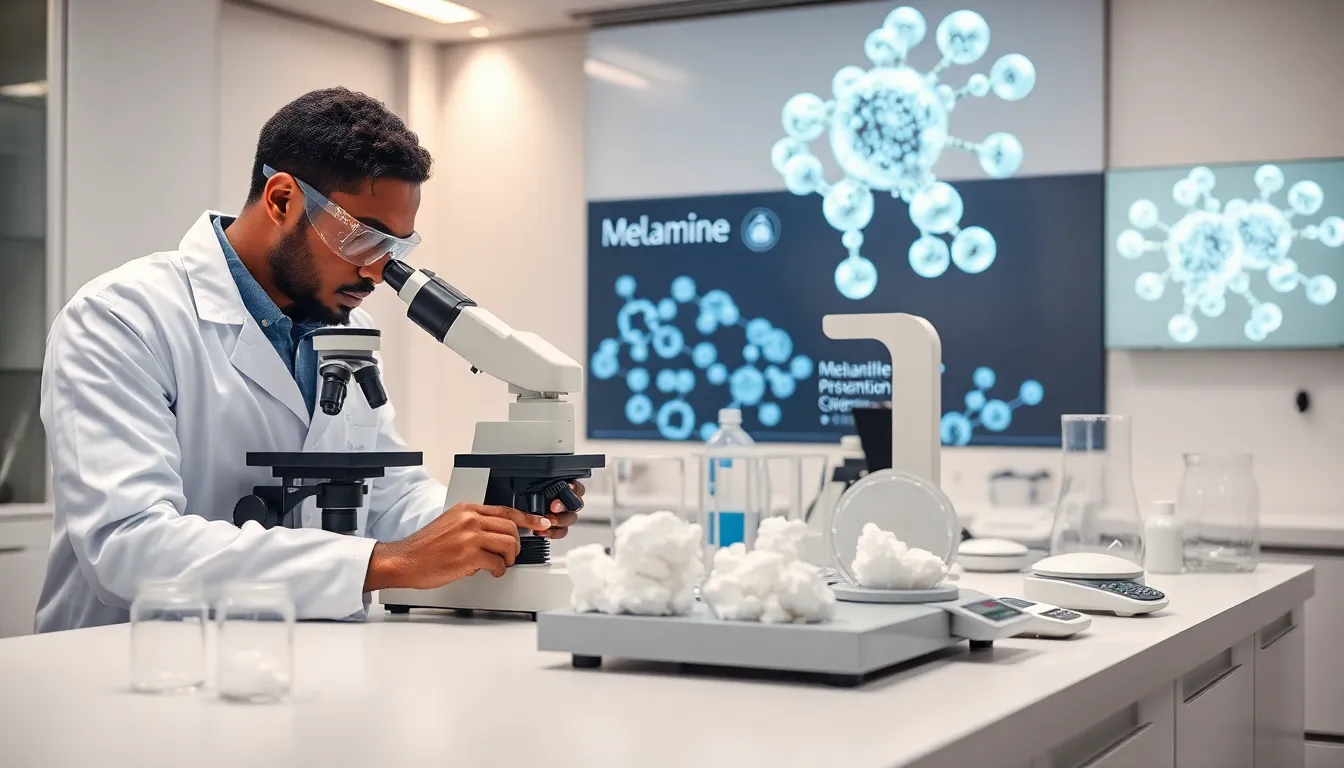Have you ever marveled at the sleek plastic dishes or the sturdy laminate counters in your kitchen? Well, your admiration might just lead you to the intriguing realm of melamine. This versatile compound isn’t just another chemical: it’s been quietly revolutionizing how we interact with everyday products. As we jump into this article, prepare to uncover the secrets behind melamine, from its chemical wonders to health concerns and environmental implications. Buckle up: it’s going to be a wild ride through that significant little compound known as melamine.
melamine1234

Melamine is an organic compound that’s found itself at the center of various discussions about modern materials. Known scientifically as 1,3,5-triazine-2,4,6-triamine, it’s been primarily recognized for its ability to resist heat and scratching. This crystalline substance is a nitrogen-rich base material that serves multiple purposes in both residential and industrial settings. Used predominantly in the manufacture of plastics, melamine forms the backbone for durable kitchenware and is also key in making resins. Beyond that, it’s effectively transformed into melamine-formaldehyde resin, which adds strength and resilience to a plethora of products. Simply put, melamine isn’t just a name on a package: it’s a fundamental player in the world of materials.
Chemical Properties of Melamine
Melamine boasts some impressive chemical properties that contribute to its popularity. For starters, it has a melting point of about 360 °C, which demonstrates its ability to withstand high temperatures without breaking down. This thermal stability makes it an excellent choice for kitchenware that faces the rigors of everyday use.
Uses of Melamine
One of the standout features of melamine is its versatility. Found in items from laminated wood finishes to adhesives, it can be molded into various shapes while maintaining integrity under pressure. Its lightweight nature complements an array of products, enhancing usability and convenience. Because melamine can be combined with other materials, it is used to produce everything from fire retardants to coatings that add durability to furniture and flooring.
Melamine in Household Products
In the kitchen and beyond, melamine is heavily used in plates, bowls, and various types of food storage. These products are often touted for their appealing designs but are often praised for their resilience. Being chip-resistant and lightweight, melamine dinnerware is a favorite among those who seek both aesthetics and functionality.
Melamine in Industrial Applications
Industrially, melamine plays a critical role. It’s a staple in the production of laminates, where its bonding properties enhance surface durability. Also, it’s involved in the manufacturing of electrical insulators, ensuring safety in appliances we use daily. The ability to customize melamine resins to meet specific needs contributes to its widespread usage across industries.
Health and Safety Concerns
While melamine’s uses are impressive, it’s essential to navigate potential health concerns associated with it. Awareness of these risks allows consumers and manufacturers to make informed decisions.
Regulatory Standards
In the United States, the Food and Drug Administration (FDA) sets stringent guidelines about melamine’s use in products intended for food contact. Compliance with these standards ensures that melamine-containing materials are safe for everyday use. Yet, these regulations necessitate constant monitoring and assessment for safety.
Toxicity and Exposure Risks
Melamine can pose toxicity risks when ingested or misunderstood as a safe substitute for similar products. It can lead to health issues like kidney stones and other urinary complications if consumed in high quantities. Long-term exposure can catalyze more severe health problems. Hence, understanding these risks can guide safer household practices.
Environmental Impact
As we become more conscious of our environmental footprint, it’s essential to examine how melamine influences our planet.
Melamine Disposal and Recycling
Disposing of melamine products responsibly is a growing concern. Melamine is not biodegradable and poses challenges for landfill sustainability. Fortunately, innovations in recycling processes are starting to emerge, aiming to reclaim this material for reuse rather than letting it contribute to long-term waste. Effective recycling methods can reduce melamine’s environmental footprint and promote sustainable practices.



